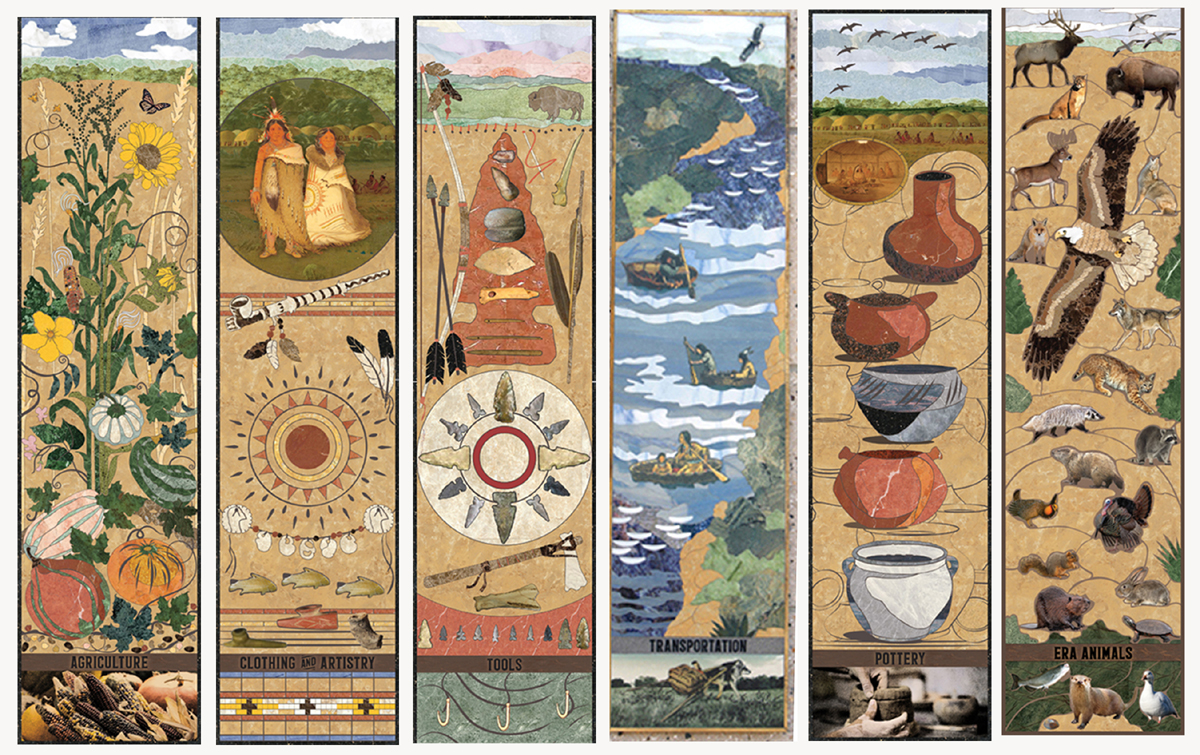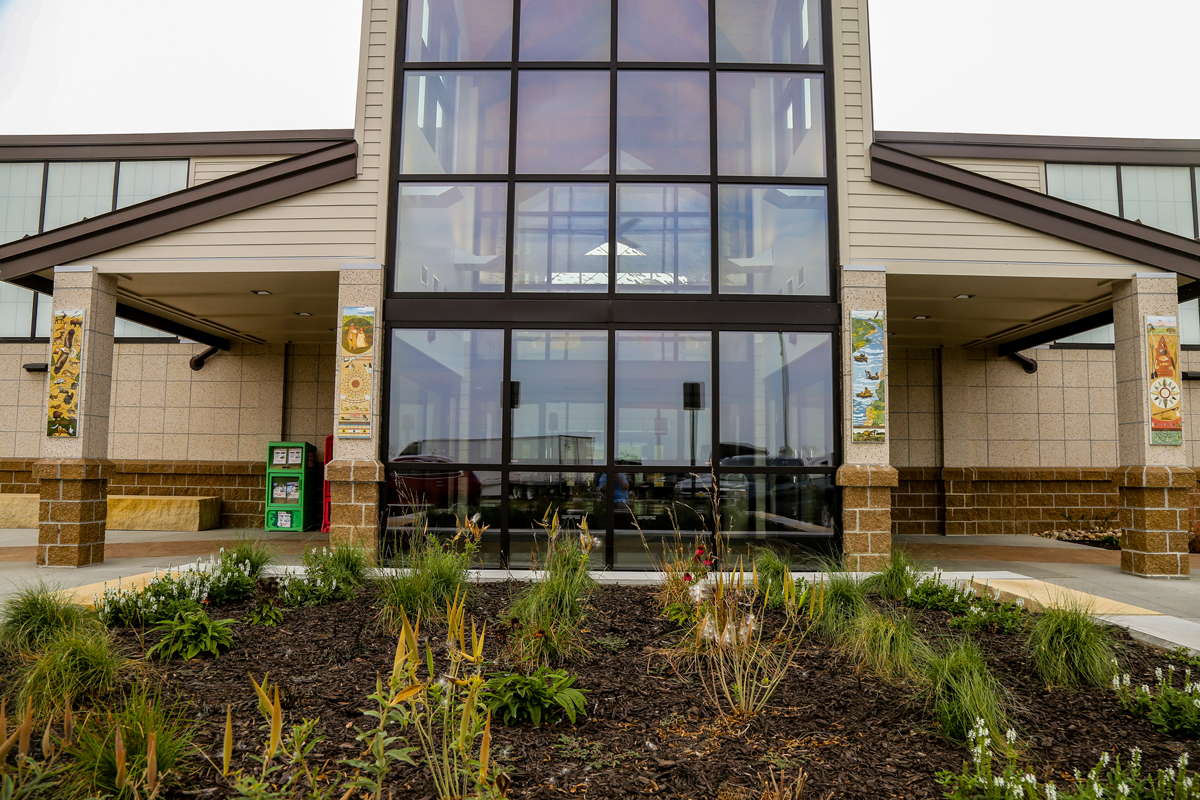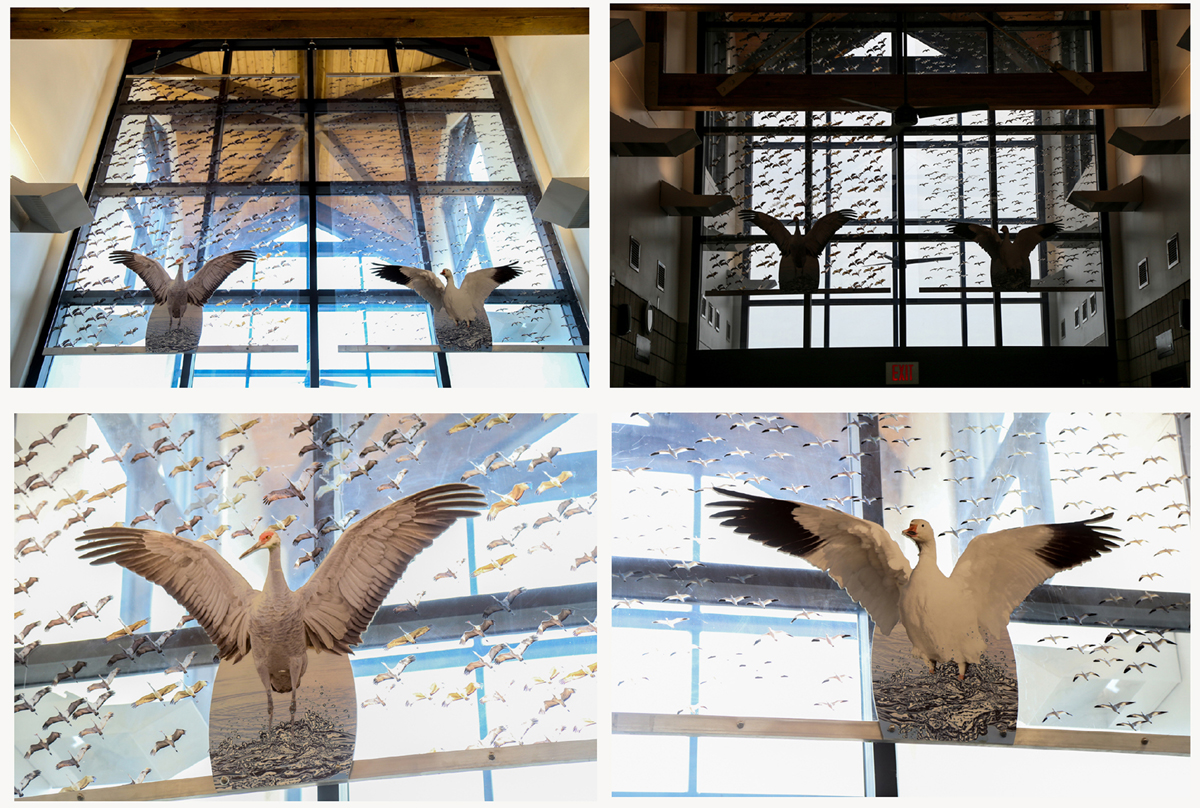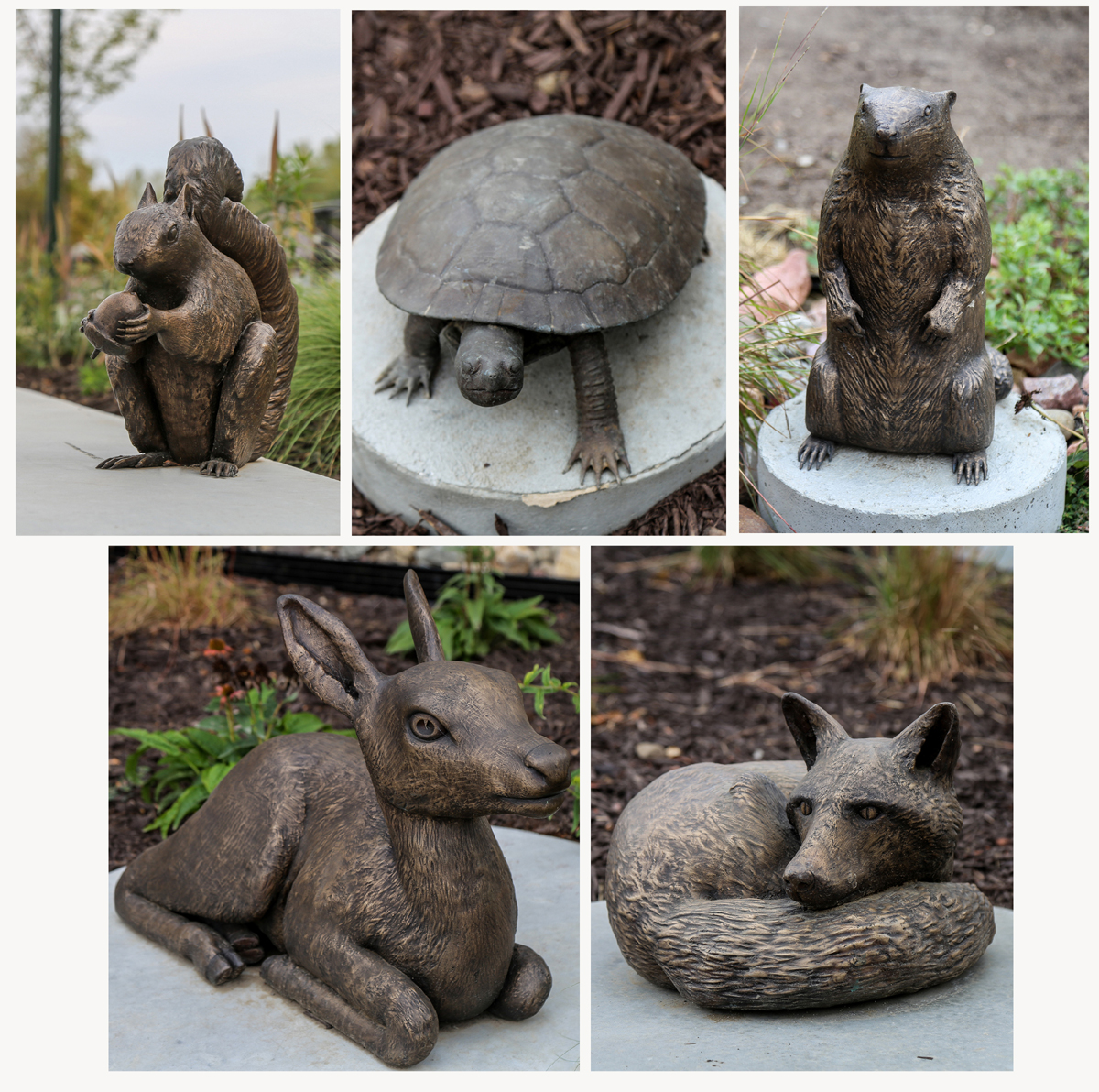



Client: Iowa Department of Transportation
Location: Glenwood, Interstate 29 rest stop; , IA, United States
Completion date: 2023
Artwork budget: $194,000
Project Team
Sculpture design, project management
Chris Bennett
Bennett Studio
design & project co-management
Jim Belilove
Creative Edge
graphic design
Liz Howard
Liz Howard Graphic Design
3-D modeling & prints
Kevin Galloway
Across the Board Creations
Lead architect
Monte Appelgate
Snyder and associates
Overview
A group of architects asked me to serve on a team with them. Interstate rest stops in Iowa display site-specific artwork. Architectural firms compete to design and develop the sites for the Iowa D.O.T.
By code a percentage of the bid cost is reserved to commission artists to design artwork for the sites. They asked me to design three projects for a new Interstate 29 rest stop near Glenwood, Iowa,
We developed a theme for the artwork which reflected the Glenwood Culture, the archaeological title for the original native inhabitants of the area.
Project 1. Six 1-foot x 4-foot porcelain enamel column panels representing the ancient Glenwood Culture, displayed four on the front and two on the back of the new building. They represent Tools, Transportation, Clothing, Era Animals, Agriculture and Pottery.
Project 2. Two 6-foot x 10-foot acrylic hanging window panels representing the migration of Sandhill cranes and Snow geese up the Missouri and Platte rivers. A dimensional aluminum Sandhill crane and a Snow goose are bolted to the front of their respective panel.
Project 3. Five life-size bronze common animals hidden in the landscape around the building. Included are a fawn, squirrel, fox, turtle, and a woodchuck.
Goals
Thematic site-specific artwork is integral to the mission of placing artwork in Iowa’s interstate rest stops. Each rest stop theme reflects the history and/or common knowledge about their respective surrounding area.
Our team of architects, artists, and designer focused on describing the “Glenwood Culture”, an ancient Indian group who lived and thrived along the Missouri and Platte River confluence basin.
They were particularly known for their earthen mound homes, agriculture, and round “bull boat”
river transportation. Images of each of these Glenwood Culture elements are included in the rest stop artwork and architecture.
Thousands of travelers each year visiting the rest stop have the opportunity to review the artwork and learn of their Glenwood Culture predecessors. Many of those same people may not ever take time to visit a facility to view artwork.
Process
Bennett Studio, Chris Bennett, Liz Howard Graphics, Liz Howard, Creative Edge, Jim Belilove, Across the Board Creations (ATBC), Kevin Galloway, Snyder and Associates, Monte Appelgate.
Snyder and Associates secured the project by competitive bid. I submitted concept drawings to the lead architect according to the chosen theme and format required.
Liz Howard Graphics revised the drawings to match the production method for the column panels and window panels. Those revised drawings were submitted to Jim Belilove of Creative Edge. Jim helped monitor the fabrication of the panels, and ordering of materials, and project
co-management
I submitted drawings of animals to Kevin Galloway of ATBC. He submitted those drawings of a 3-D modeler. After the modeling was complete, Kevin 3-D printed the modeled animals. The printed animals were submitted to Eagle Bronze for casting.
I hired two assistants to help install the three projects.
Additional Information
I enjoyed working with the team members and vendors, learning new design and production methods from each one. There were some errors made in the production of the column panels. Also, there was damage sustained to one of the acrylic window panels by mishandling during shipping. The project was insured. One claim paid for re-fabricating the column panels in porcelain enamel on steel versus the original method of water-jet cut stone. The other claim addressed repairing the marred acrylic window panel. Before investigating the cost to re-fabricate the column panels, I was unaware of the porcelain enamel technique. I found that method will be a cost-effective way to present future designs.